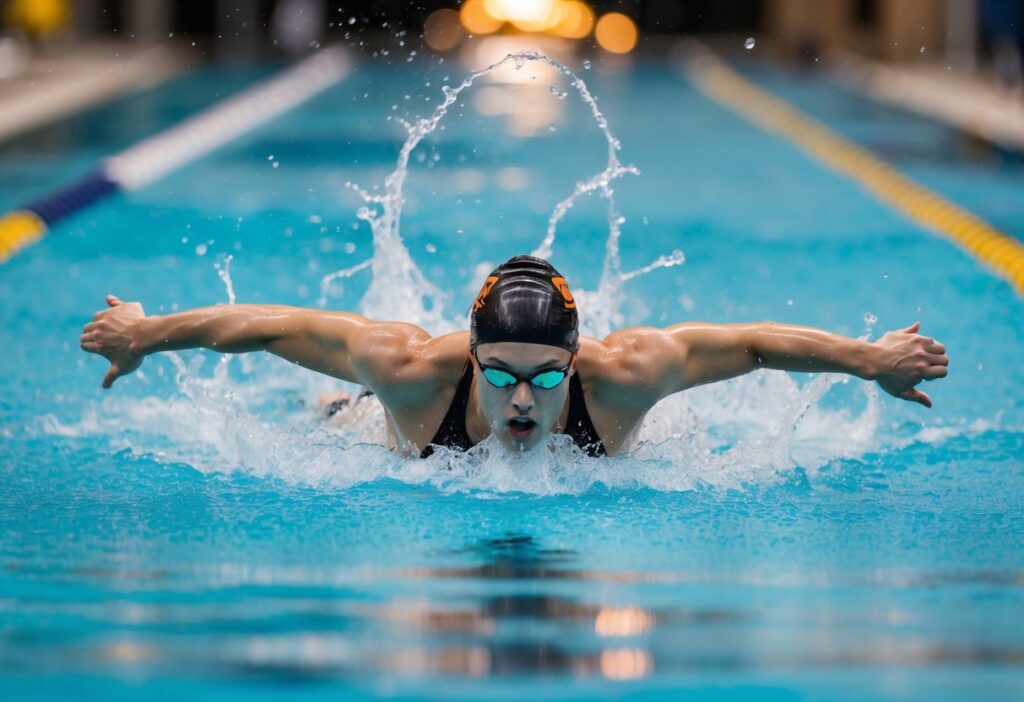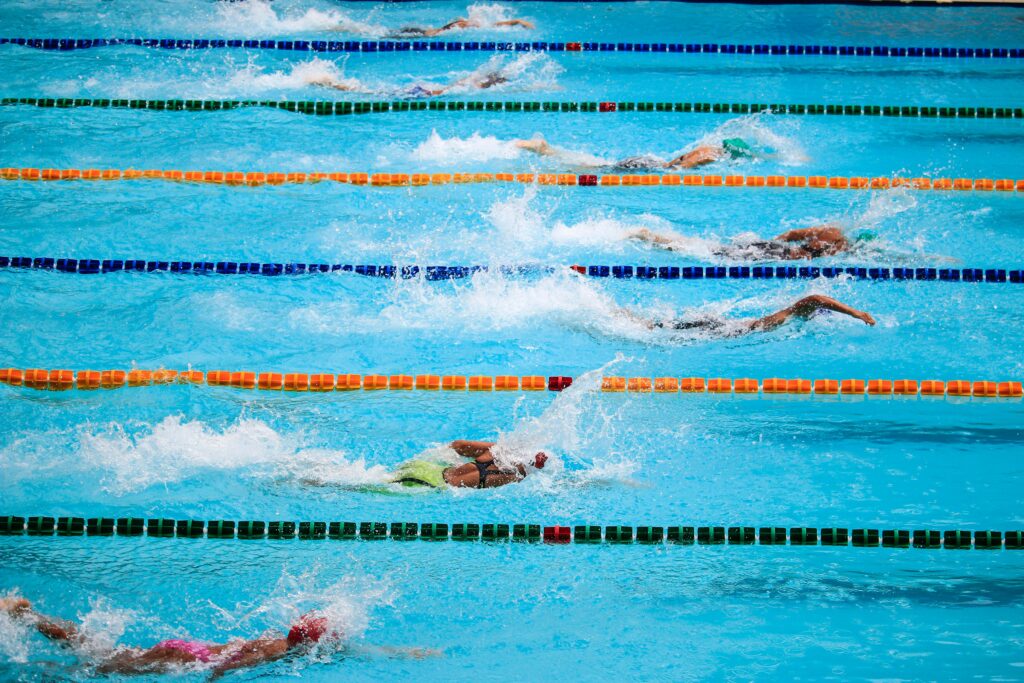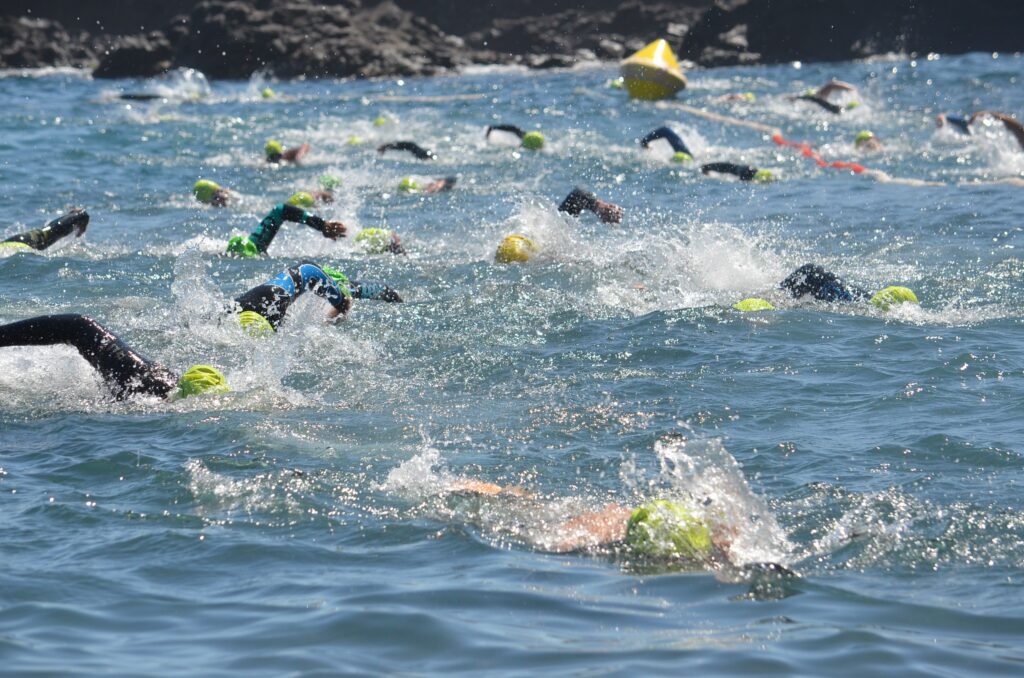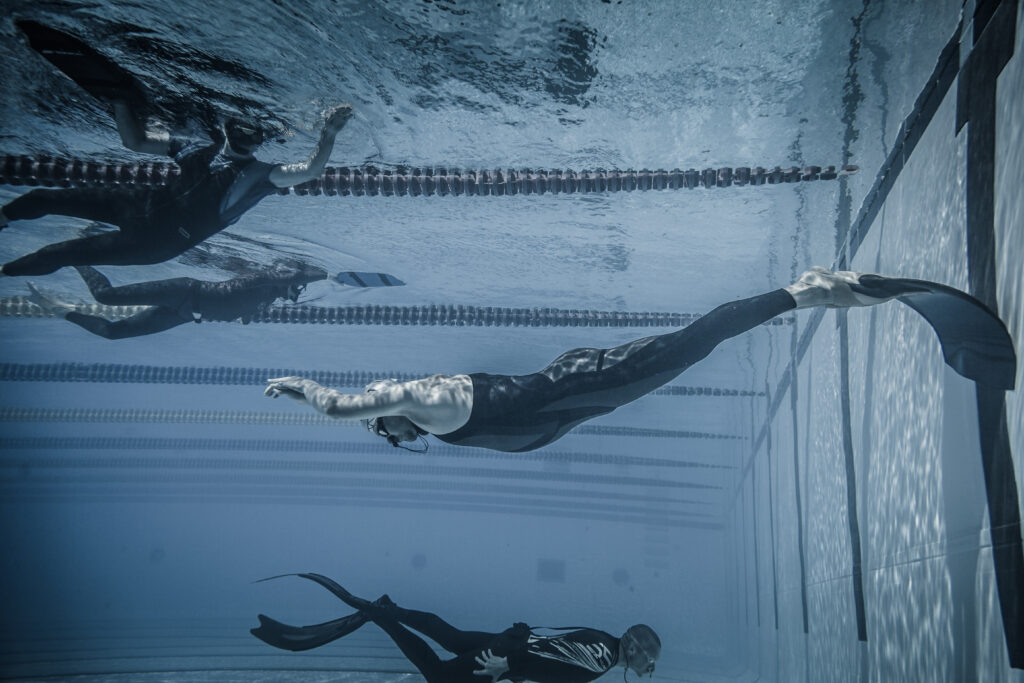Swimmers looking for a performance edge often wonder about supplements. Creatine stands out as one of the most researched options available. Studies show that creatine supplementation can provide significant benefits for swimmers, particularly in high-intensity training where it helps maintain maximal power output and improves recovery between sets.
Creatine works by increasing the body’s stores of phosphocreatine, which helps regenerate ATP—the primary energy currency for muscle contractions. For swimmers, this translates to improved performance in repeated interval swim sets, though the benefits are less pronounced for single sprints. While creatine does cause some water retention in muscle fibres, most swimmers don’t report feeling heavier in the water.
Beyond performance enhancement, creatine offers additional advantages for serious swimmers. Research indicates it can help increase lean body mass and enhance recovery between training sessions. These benefits make creatine supplementation worth considering for competitive swimmers who engage in frequent, intense training and want to optimise their performance potential.
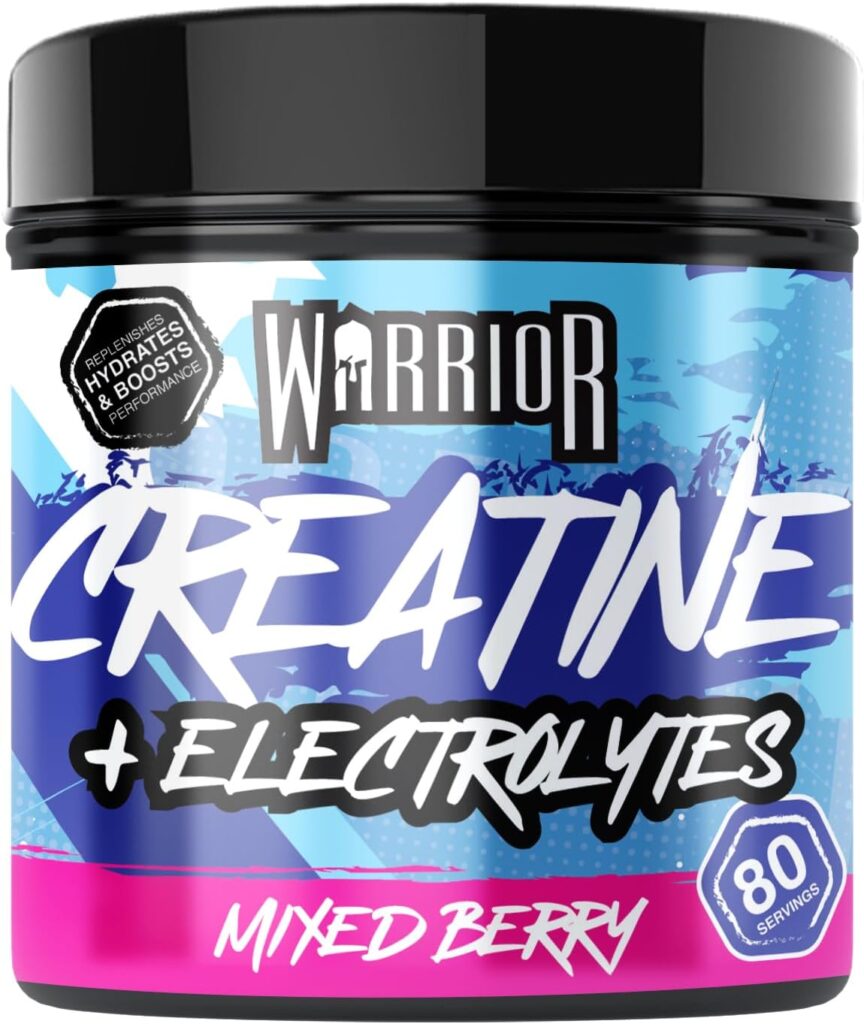
What Is Creatine and How Does It Work?
Creatine is a naturally occurring compound that plays a vital role in energy production during high-intensity exercise. It helps muscles generate more power during short bursts of activity, making it particularly relevant for swimmers.
Understanding Creatine in the Body
Creatine is a substance made up of three amino acids: glycine, arginine, and methionine. Our bodies produce about 1-2 grams of creatine daily in the liver, kidneys, and pancreas. We also get creatine from our diet, primarily from animal products like meat and fish.
About 95% of the body’s creatine is stored in skeletal muscle, with small amounts found in the brain and other tissues. The average person has about 120-140 grams of creatine in their body, though this varies based on muscle mass, diet, and exercise habits.
The body’s natural creatine levels can become depleted during intense exercise, which is why many athletes turn to supplementation to maintain optimal levels and enhance performance.
Types of Creatine Supplements
The most common and well-researched form is creatine monohydrate, which consists of a creatine molecule bound to a water molecule. It’s considered the gold standard due to its effectiveness, safety profile, and affordability.
Other types include:
- Creatine ethyl ester
- Buffered creatine
- Liquid creatine
- Creatine hydrochloride (HCl)
- Creatine nitrate
Despite marketing claims about superior absorption or effectiveness, research consistently shows that creatine monohydrate is equally effective and often more economical than these alternatives.
The typical supplementation protocol involves a loading phase (20g daily for 5-7 days) followed by a maintenance phase (3-5g daily), though some people skip the loading phase altogether.
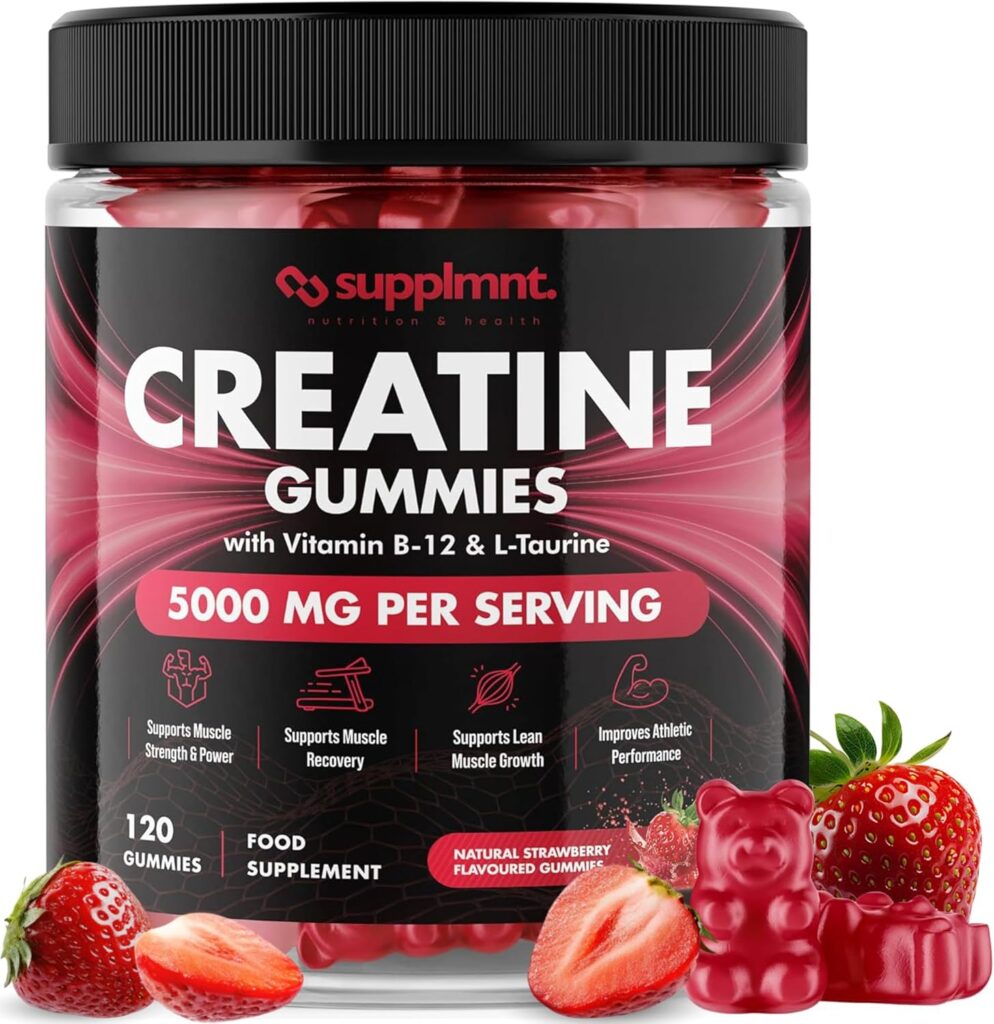
Creatine’s Role in Muscle Cells
Inside muscle cells, creatine is converted to phosphocreatine, which serves as a rapid energy reserve. During high-intensity exercise like sprinting or powerful swimming strokes, muscles need energy quickly.
Phosphocreatine donates its phosphate group to ADP (adenosine diphosphate) to create ATP (adenosine triphosphate), the body’s primary energy currency. This process happens much faster than other energy systems, making it crucial for explosive movements.
Supplementing with creatine can increase muscle creatine content by approximately 20-40%, enhancing this energy system’s capacity. More phosphocreatine means more rapid ATP regeneration, allowing for greater power output during short, intense efforts.
This mechanism explains why creatine supplementation tends to benefit activities requiring bursts of power rather than pure endurance activities.
Creatine Supplementation and Swimming Performance
Creatine has gained attention in the swimming community for its potential to enhance performance. Studies show specific improvements in both strength metrics and swimming times when used correctly.
Effects on Strength and Power Output
Creatine supplementation has demonstrated significant benefits for swimmers seeking to improve their strength and power. This supplement works by increasing phosphocreatine stores in muscles, which directly enhances the body’s ability to produce ATP—the primary energy source for high-intensity activities.
For competitive swimmers, this translates to improved stroke accuracy and more consistent performance during training sessions. The strength benefits are particularly noticeable during resistance training, allowing swimmers to:
- Increase maximum power output
- Enhance dry-land training effectiveness
- Improve explosive movements critical for starts and turns
These strength improvements can be especially beneficial during tapering periods before competitions, when maintaining power while reducing training volume becomes crucial.
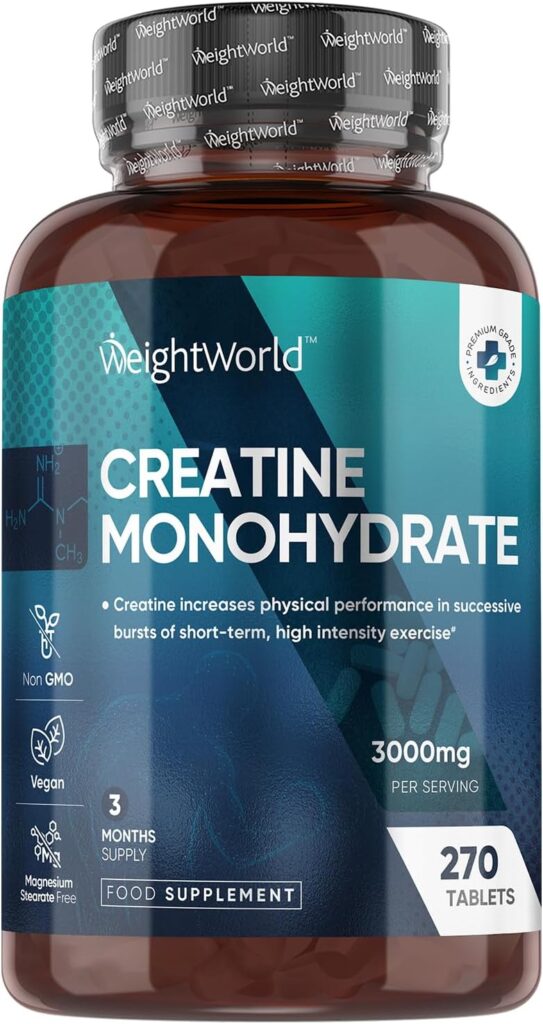
Impact on Sprint and Repetitive Swimming
Research indicates that creatine offers measurable benefits for swimming performance, particularly in short-distance and repetitive efforts. Studies have calculated a 1.5% improvement in swimming performance for repeated intervals and a 0.8% improvement in sprint performance with creatine supplementation.
While these percentages may seem small, in competitive swimming where races are often decided by hundredths of a second, such improvements can be significant. The benefits are most pronounced in:
- High-intensity training sessions
- Repeated sprint efforts under 30 seconds
- Recovery between sets of intense swimming
Not all research supports these findings, however. Some studies have indicated that creatine supplementation does not improve sprint performance in competitive swimmers. Individual responses may vary based on swimming events, training status, and supplementation protocols.
Potential Benefits of Creatine for Swimmers
Creatine supplementation offers several advantages for swimmers seeking performance improvements. Research indicates it can help with power output, recovery, and body composition changes that are valuable for competitive swimming.
Enhancing Muscle Strength and Growth
Creatine has been shown to significantly improve power development in swimmers, particularly when measured on swim bench ergometers. This supplement works by increasing phosphocreatine stores in muscles, which enhances energy production during high-intensity, short-duration efforts—exactly what swimmers need for sprints and explosive movements.
Studies indicate that creatine can help swimmers maintain maximal power output during training. This is especially beneficial for sprint events and powerful starts and turns.
The supplement stimulates protein synthesis and may lead to greater strength gains over time. Swimmers taking creatine often experience improved performance in dryland training, which translates to better propulsion in the water.
For events requiring repeated bursts of speed, creatine’s ability to enhance ATP regeneration makes it particularly valuable.
Muscular Recovery and Reduced Fatigue
One of creatine’s primary benefits is its ability to aid recovery between high-intensity swimming sets. During interval training, creatine helps replenish energy stores more quickly, allowing swimmers to maintain performance across multiple efforts.
Research shows that while creatine may not significantly enhance single sprint performance, its benefits become evident in repeated interval swim sets. This makes it particularly useful for training adaptations.
Creatine can help:
- Reduce muscle breakdown during intense training
- Decrease recovery periods between sessions
- Minimise exercise-induced muscle damage
These benefits allow swimmers to train harder and more frequently, potentially accelerating fitness gains and technique development over a season.
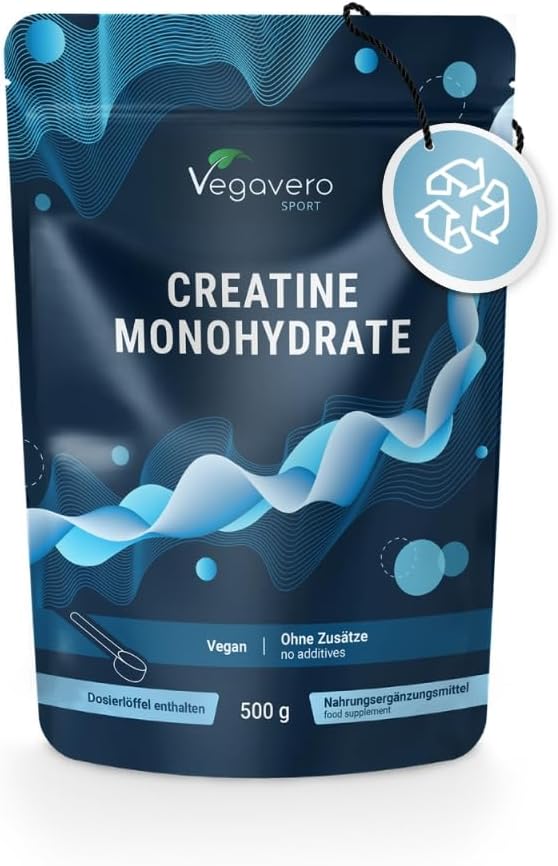
Influencing Body Composition
Creatine supplementation typically causes weight gain, but this is primarily due to increased water retention within muscle tissue. This effect actually contributes to lean body mass increases rather than fat gain.
Many swimmers report feeling stronger without feeling heavier in the water. The improved muscle fullness can enhance power-to-weight ratio, potentially benefiting performance.
Creatine may also support:
- Increased fat-free mass
- Enhanced muscle definition
- Better nutrient delivery to muscles
It’s worth noting that water weight gain is typically 1-2 kg, which doesn’t significantly impact hydrodynamics for most swimmers. The strength benefits often outweigh this minor change.
When combined with proper nutrition and training, creatine can help swimmers optimise their body composition for their specific events and racing distances.
Limitations of Creatine for Endurance Swimming
While creatine offers benefits for explosive movements in swimming, it presents distinct challenges when applied to long-distance and endurance swimming events that rely heavily on aerobic systems rather than pure power.
Effects on Aerobic Performance
Creatine supplementation may have limited impact on purely aerobic swimming events. The primary function of creatine is to enhance the phosphocreatine system, which primarily fuels short, high-intensity efforts rather than sustained aerobic activity.
Research indicates that creatine’s benefits diminish as exercise duration increases beyond 30 seconds. For events requiring continuous swimming over several minutes or longer, the ATP-PC system that creatine enhances contributes minimally to overall energy production.
Some swimmers report feeling heavier in the water after creatine supplementation. This occurs because creatine causes water retention in muscles, potentially adding 1-2 kg of body weight. This extra weight might negatively affect buoyancy and increase drag in the water.
Creatine and Endurance Capacity
Creatine’s effects on metabolic efficiency during endurance swimming remain controversial. Unlike supplements specifically designed to enhance aerobic metabolism, creatine does not significantly improve oxygen utilisation or metabolic efficiency during sustained swimming.
Long-distance swimmers rely predominantly on fat and carbohydrate metabolism rather than the phosphocreatine system. Supplementation may therefore provide minimal advantages for events exceeding 400 metres.
Some athletes report digestive discomfort with creatine use, including:
- Stomach cramping
- Bloating
- Gastrointestinal distress
These side effects can interfere with training consistency and performance in endurance events where comfort is crucial. Furthermore, the water retention associated with creatine can temporarily increase body weight, potentially requiring adaptation in stroke mechanics for optimal efficiency.
Risks and Side Effects of Creatine Use
While creatine is generally considered safe for most people, it can cause a range of side effects and may not be suitable for everyone. Understanding these potential downsides is important for swimmers considering this supplement.
Common Adverse Effects
When starting creatine supplementation, some people experience temporary digestive issues. These include stomach discomfort, bloating, and gas. These symptoms often improve once your body adjusts to the supplement.
Water retention is another common effect, especially during the loading phase. This can cause temporary weight gain of 1-2 kg. While this isn’t harmful, it might affect buoyancy in the water, which some swimmers find uncomfortable.
Some users report headaches when beginning creatine supplementation. Staying properly hydrated can help minimise this issue.
It’s worth noting that many side effects are mild and typically resolve as your body adapts to the supplement or if you reduce your dosage.
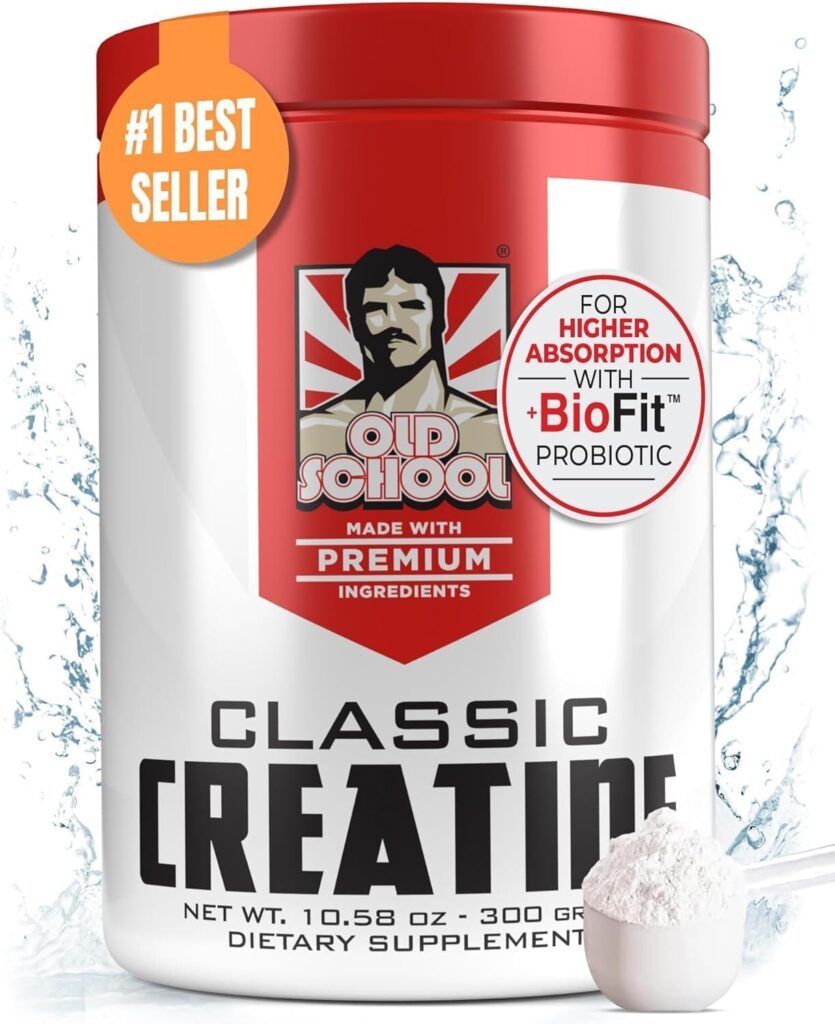
Concerns About Dehydration and Muscle Cramps
Creatine draws water into muscle cells, which has led to concerns about dehydration. However, research hasn’t conclusively shown that creatine causes dehydration when users drink adequate fluids.
Despite popular belief, evidence doesn’t support that creatine causes muscle cramps. In fact, some studies suggest it might help prevent cramping by improving hydration within muscle cells.
For swimmers, proper hydration is especially important when taking creatine, as they already lose fluids through sweat even when training in water. Drinking plenty of water throughout the day can help mitigate any potential dehydration risk.
Monitoring how your body responds during training is crucial to identify any unusual cramping patterns.
Potential Health Conditions and Non-Responders
Certain people should avoid creatine supplementation entirely. Those with kidney disease, liver disease, or diabetes should not take creatine. The supplement may exacerbate these conditions or interfere with medications.
People with bipolar disorder should consult healthcare providers before using creatine, as it might affect mood states. Those with heart conditions should also seek medical advice first.
Some individuals are “non-responders” to creatine, meaning they experience minimal or no performance benefits. This affects approximately 20-30% of users and is often linked to genetic factors or diet patterns.
For swimmers with pre-existing health conditions like rheumatoid arthritis or COPD, consulting a healthcare provider before starting creatine is essential to ensure it won’t worsen symptoms or interact with treatments.
Dosing Strategies and Protocols for Swimmers
Proper creatine supplementation requires specific timing, dosing, and considerations to maximise benefits for swimmers. When implemented correctly, these protocols can help improve repeated sprint performance and high-intensity training capacity.
Creatine Loading Versus Daily Maintenance
The traditional approach to creatine supplementation begins with a loading phase to rapidly saturate muscle stores. This typically involves taking 20-25g of creatine monohydrate daily (divided into 4-5 doses of 5g each) for 5-7 days. This loading protocol can increase muscle creatine stores faster than lower doses.
After loading, swimmers should switch to a maintenance dose of 3-5g daily to sustain elevated creatine levels. This regimen helps maintain the performance benefits for repeated swim intervals.
Some swimmers prefer to skip the loading phase and simply take 3-5g daily for a longer period (3-4 weeks) to gradually reach saturation. This approach may cause fewer digestive issues but takes longer to produce ergogenic effects.
For competition cycles, swimmers might time their loading phase to peak 1-2 weeks before important meets.
How to Take Creatine Safely
Creatine monohydrate remains the most researched and effective form for swimmers. When beginning supplementation, athletes should mix creatine immediately before consuming, as it degrades quickly in liquid.
Taking creatine with a protein shake or carbohydrate-rich meal can enhance uptake. A combination of 50-100g of carbohydrates with 20g of whey protein or other dietary protein sources creates an optimal environment for creatine absorption.
Proper hydration is crucial when supplementing with creatine. Swimmers should increase water intake by 500-1000ml daily during supplementation to prevent dehydration.
Common side effects include:
- Water retention (particularly during loading)
- Mild digestive discomfort
- Weight gain (1-2kg initially, primarily water)
These effects are typically temporary and resolve within days of beginning supplementation.
Interactions With Caffeine and Other Supplements
The relationship between creatine and caffeine requires careful consideration for swimmers. Some research suggests that caffeine ingestion may interfere with creatine retention, though this remains controversial. To minimise potential interference, swimmers might separate caffeine and creatine intake by 3-4 hours.
Creatine works well alongside other evidence-based swimming supplements. Sodium bicarbonate may complement creatine’s effects by addressing different aspects of fatigue during high-intensity training. Beta-hydroxy-beta-methylbutyrate (HMB) can be stacked with creatine to potentially enhance recovery between training sessions.
For optimal results, swimmers should consider:
- Taking creatine post-workout rather than pre-workout if also consuming caffeine
- Combining creatine with fast-digesting carbohydrates to improve uptake
- Cycling supplements based on training phases (higher doses during intensive training blocks)
Research indicates that low-dose creatine supplementation enhances the sprint phase of 400 metres swimming performance, making it particularly valuable for middle-distance events.
Creatine’s Role in the Context of Sports Nutrition
Creatine stands as one of the most researched and effective supplements in sports nutrition. It plays a critical role in energy production during high-intensity, short-duration activities that swimmers frequently engage in during training and competition.
Dietary Supplementation for Athletes
Athletes across various sports, including swimming, often seek effective dietary supplements to enhance performance. Creatine monohydrate has emerged as a leading option due to its well-documented benefits for power and strength.
The supplement works by increasing phosphocreatine stores in muscles, which helps regenerate ATP—the primary energy currency of cells. This process is particularly valuable during explosive movements and repeated sprint efforts common in competitive swimming.
For swimmers, a typical supplementation protocol involves:
- Loading phase: 20g daily (divided into 4 doses) for 5-7 days
- Maintenance phase: 3-5g daily thereafter
Research indicates that creatine increases intramuscular creatine concentrations and can improve exercise performance by up to 15%, making it a valuable addition to a swimmer’s nutrition strategy.
Combining Creatine With Resistance Training
The synergistic effect of creatine supplementation with resistance training provides substantial benefits for swimmers. When paired with structured strength work, creatine helps athletes develop greater power and muscular endurance.
Studies show that individuals taking creatine whilst engaging in resistance training experience:
- Enhanced strength gains
- Increased muscle mass
- Improved recovery between training sessions
- Better performance in repeated high-intensity efforts
These adaptations are particularly beneficial for swimmers, as the sport requires both strength and power for starts, turns, and maintaining technique throughout races.
Creatine enhances high-intensity exercise performance by improving energy availability during demanding training sessions. This allows swimmers to train harder and adapt more effectively to their resistance programme.
The combination proves especially effective for sprint events where explosive power and anaerobic capacity are crucial determinants of success.
Legal, Ethical, and Safety Considerations
Understanding the rules governing creatine use in competitive swimming is essential, as is considering the ethical dimensions of using supplements to enhance performance.
Regulatory Positions and Sports Governing Bodies
Creatine is considered a legal supplement by major sports authorities. The International Olympic Committee does not list creatine on its prohibited substances list, allowing athletes to use it during training and competition.
Similarly, the National Collegiate Athletic Association (NCAA) permits creatine use among student-athletes. Unlike banned performance enhancers, creatine is classified as a dietary supplement rather than a drug.
Extreme caution is still recommended regarding supplement use by Aquatics GB (formerly British Swimming). This is primarily due to concerns about manufacturing standards and potential contamination.
Swimmers should always verify that their supplements come from reputable sources to avoid inadvertently consuming prohibited substances.
Ethical Implications of Performance Enhancers
Though legal, some debate exists about whether creatine provides an unfair advantage. Unlike prohibited performance enhancers, creatine works by enhancing natural physiological processes rather than introducing foreign substances.
The overwhelming evidence indicates that creatine supplementation is safe for adult populations in both short and long-term use. This safety profile strengthens the ethical case for its use.
Many competitive swimmers view creatine as comparable to other training aids like specialised nutrition or advanced equipment. It’s considered part of a comprehensive approach to preparation rather than a shortcut.
Ethical considerations should also include proper education about realistic expectations. Creatine may provide modest benefits for repeated interval swim performances but won’t transform average swimmers into elite athletes.
Who Should and Should Not Use Creatine?
Creatine supplementation offers potential benefits for many swimmers, but it’s not suitable for everyone. Safety considerations and individual health factors must be carefully evaluated before starting any supplement regimen.
Considerations for Young Swimmers and Special Populations
Young swimmers under 18 should generally avoid taking creatine supplements. While creatine occurs naturally in the body, children under age 18 should avoid supplementation. Their bodies are still developing, and the long-term effects of creatine on growing bodies aren’t fully understood.
Pregnant or breastfeeding women should not take creatine supplements. The safety profile in these populations hasn’t been adequately studied, making it a risk not worth taking.
Swimmers with pre-existing kidney or liver conditions should exercise caution. These organs process creatine, and supplementation could potentially stress already compromised organ function.
Those with diabetes or conditions affecting blood sugar regulation should consult medical professionals before starting creatine, as it may impact glucose metabolism.
Consulting With Healthcare Professionals
Before beginning creatine supplementation, swimmers should always consult with qualified healthcare providers. These professionals can:
- Review medical history for potential contraindications
- Assess current medication use for possible interactions
- Provide personalised dosage recommendations based on individual needs
- Monitor for any adverse effects through regular check-ups
Competitive swimmers should additionally consult with sports nutritionists who understand the specific demands of swimming. These specialists can advise on proper timing of creatine intake to maximise performance benefits.
It’s essential to use only high-quality, tested supplements to minimise the risk of contamination with banned substances, especially important for swimmers competing at elite levels where drug testing is routine.
Summary: Is Creatine a Good Supplement to Take to Improve Swimming?
Creatine is indeed a beneficial supplement for swimmers looking to enhance their performance. Research consistently shows that creatine has significant positive effects on swimming performance.
One of the primary benefits is that creatine improves power development in swimmers, which is crucial for explosive movements during races, particularly in sprint events. This power increase can be measured on swim bench ergometers.
Contrary to some misconceptions, creatine is considered safe and effective for swimmers. Many experts suggest it is perhaps one of the safest supplements that all swimmers should consider taking.
The supplement works by increasing phosphocreatine stores in muscles, which helps regenerate ATP—the primary energy source for high-intensity efforts. This is particularly valuable for competitive swimming events.
Key benefits for swimmers include:
- Enhanced power output
- Improved sprint performance
- Better recovery between high-intensity sets
- Increased muscle mass potential
Creatine is especially effective for events requiring short bursts of maximum effort, such as 50m and 100m races. For distance swimmers, the benefits may be less pronounced but still valuable for training intensity.
When used properly, creatine can be an important tool in a swimmer’s performance arsenal, supporting both training adaptations and competitive outcomes.
Frequently Asked Questions
Creatine supplementation offers specific benefits for swimmers looking to improve performance. Many competitive athletes have questions about proper usage, safety, and practical implementation in swimming training programmes.
What are the potential benefits of creatine supplementation for competitive swimming performance?
Creatine can significantly enhance swimming performance through several mechanisms. Research consistently shows creatine has a positive effect on swimming performance.
The primary benefit is improved power output during high-intensity, short-duration efforts. This is particularly valuable for sprint events where explosive strength is crucial.
Creatine helps replenish ATP (adenosine triphosphate) more quickly, which can enhance recovery between intense training sets. This allows swimmers to maintain higher quality training throughout sessions.
Additionally, creatine aids in muscle recovery and increases muscle mass, beneficial for swimmers undertaking intensive training routines.
Are there any specific forms of creatine that are more effective for swimmers?
Creatine monohydrate remains the most researched and reliable form for swimmers. This standard form has demonstrated consistent results in performance enhancement.
Other forms like creatine HCL (hydrochloride) or buffered creatine claim improved absorption, but research hasn’t conclusively proven they offer significant advantages for swimmers specifically.
The micronised version of creatine monohydrate may be preferable for those who experience digestive discomfort, as its smaller particles can be easier to absorb.
Is the use of creatine permitted by major swimming governing bodies and anti-doping agencies?
Creatine is fully permitted by FINA (International Swimming Federation), WADA (World Anti-Doping Agency), and other major swimming governing bodies. It is not on any prohibited substances list.
Swimmers can use creatine without concern about failing drug tests at competitions. However, athletes should always purchase from reputable suppliers to avoid contaminated products.
Quality control is essential, as some supplements may contain prohibited substances not listed on the label.
How do elite swimmers typically incorporate creatine into their nutrition plans?
Elite swimmers often follow a loading protocol when beginning creatine supplementation. This typically involves taking 20g daily (divided into 4-5 doses) for 5-7 days.
After the loading phase, most maintain with 3-5g daily. Some athletes skip the loading phase altogether and simply take the maintenance dose, which eventually achieves similar saturation levels.
Many elite swimmers time their creatine intake around training sessions. Some take it pre-workout for energy, while others prefer post-workout to aid recovery.
Training periodisation also influences usage patterns, with some swimmers cycling off creatine during certain training phases or taking higher doses during intensive training blocks.
What are the known side effects of creatine usage for athletes involved in water sports?
The most commonly reported side effect is water retention. This may initially cause a slight increase in body weight, which studies show doesn’t increase total body water over longer training periods.
Some swimmers report mild gastrointestinal discomfort, particularly during the loading phase. Reducing dosage or switching to micronised creatine often resolves this issue.
Muscle cramping is occasionally mentioned, though research hasn’t established a clear link. Proper hydration remains important when using creatine.
When is the most optimal time for swimmers to consume creatine for maximal effectiveness?
Research suggests taking creatine post-workout may slightly enhance its uptake. This timing capitalises on increased blood flow to muscles and heightened insulin sensitivity.
Consistency matters more than exact timing. Taking creatine at the same time daily helps maintain muscle saturation levels.
For competitions, high school and teenage swimmers have shown performance improvements when following proper supplementation protocols without special timing adjustments.
Some athletes prefer dividing their daily maintenance dose, taking half before training and half after to maintain levels throughout the day.

